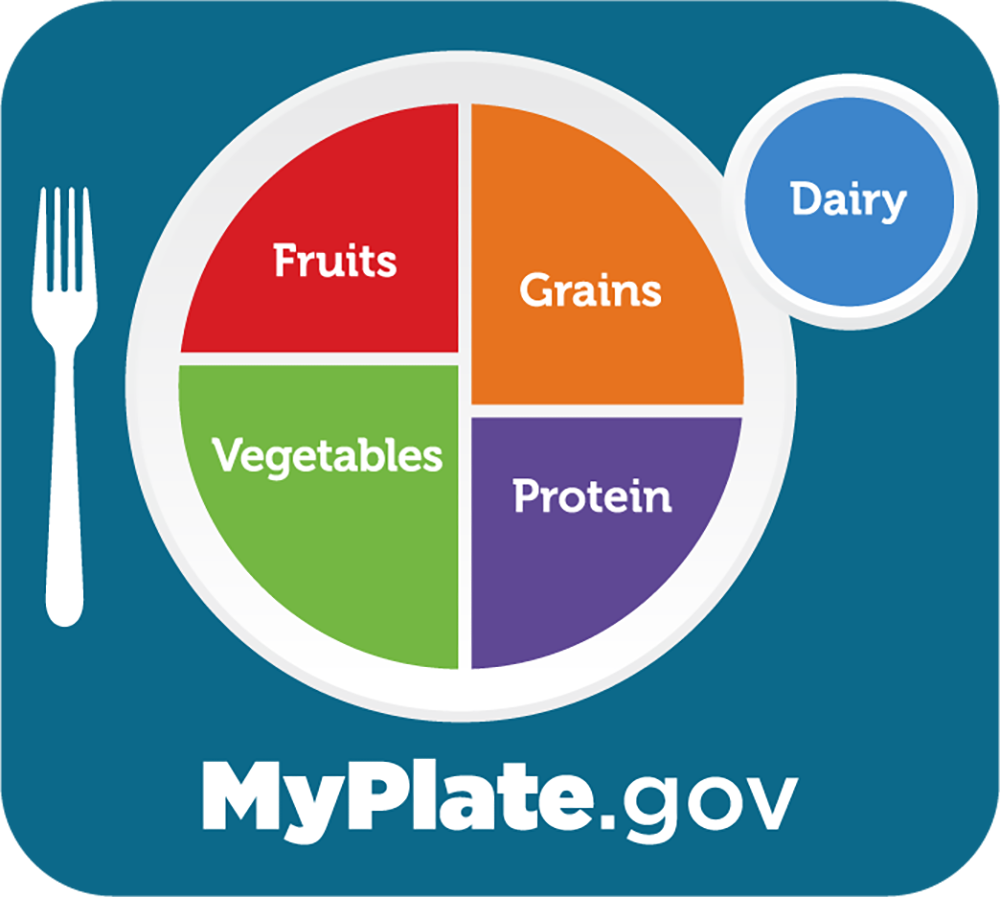Understanding Portion Sizes
Eating a healthy, balanced diet can help lower your risk of cancer and help you get to and maintain a healthy weight. But knowing what and how much to eat can be tricky. Learn more about portion and serving sizes and how to choose an eating plan that will help you meet your health goals.
Are portion and serving sizes the same thing?
No, they are not the same.
Portion size is how much of a food you are served or serve yourself. No specific amount is associated with portion size.
Serving size is the amount of a food that has been tested for calories and nutrients and listed on a food label. The amount is based on the amount that a typical person eats or drinks of that food. This is a guideline. You might eat more or less than the listed serving size depending on your needs.
How much is a normal portion?
The right portion size will differ from person to person. It is based on your age, height, weight, and activity level. The portion size you should have will depend on whether you are trying to lose, gain, or maintain your weight.
Serving sizes are suggested for each food type. Thinking about serving size can help you figure out how much to eat to best meet your dietary needs.
Fruits and vegetables
For cancer risk reduction, the American Cancer Society (ACS) advises following the US Dietary Guidelines to consume at least 2 1/2 to 3 servings of vegetables and 1 1/2 to 2 servings of fruit each day.
Examples of a serving of vegetables are:
- 1 cup of raw, frozen or canned vegetables
- 2 cups of leafy greens
- 1 cup of 100% vegetable juice
Examples of a serving of fruit are:
- 1 cup of fresh, frozen or canned fruit
- 1/2 cup of dried fruit
- 1 cup of 100% fruit juice.
Boost servings of fruits and vegetables
ACS recommends eating a colorful variety of fruits and vegetables each day to help prevent cancer. Substitute low calorie, high-fiber fruits and vegetables for higher calorie foods and snacks. This switch will help you get the fruits and vegetables you need, feel full, and save on calories.
Whole grains
ACS recommends getting at least half of your grains as whole grains. Whole grains include more nutrients and fiber than processed grains and might lower your risk of colorectal cancer risk. The amount of grains you should eat each day will depend on your calorie needs.
Examples of a serving of grains are:
- 1 slice of bread
- 1 cup cereal
- 1/2 cup of cooked rice or pasta
Protein
ACS recommends eating more lean protein and limiting red and processed meats. Instead, eat lean poultry, seafood, and other protein sources, like beans, lentils, nuts, and other plant-based proteins.
Examples of a serving of protein are:
- 1 ounce of meat, poultry, or fish
- 1/4 cup cooked beans
- 1 egg
- 1/2 ounce of nuts or seeds
- 1 tablespoon of nut butter
- 1/4 cup (about 2 ounces) of tofu
To help you visualize what a serving looks like, 1 ounce of meat, poultry, or fish is about the size of a matchbox. For meat, poultry, and fish, 3 ounces is the size of a deck of cards or bar of soap. These portions sizes are often recommended for a meal.
How much protein you should eat in a day depends on your calorie needs and other health considerations.
Dairy
Most dairy products provide nutrients like calcium and protein. Try to stick with low-fat, reduced-fat, or fat-free (skim) dairy products.
ACS doesn’t have recommendations for how much dairy you should eat each day to prevent cancer. However, US dietary guidelines recommend that people 9 years of age and older have 3 dairy servings a day. Infants and younger children will need less.
Examples of a serving of dairy include:
- 1 cup of milk or soy milk (with added calcium)
- 1 cup of yogurt
- 1 1/2 ounces of natural cheese
Fats and oils
There are no guidelines or ACS recommendations for how much fat you should eat each day. Fats are higher in calories than other food types and some are known to cause more health problems. Many guidelines suggest avoiding saturated and trans fats when you can.
If you want to use fats or oils when cooking or preparing foods, use the smallest amount you can. Look for lower fat versions or oils with monounsaturated and polyunsaturated fats.
Tools for building a healthy diet
Before you can figure out how many servings of each food type to eat, you need to determine how many calories you should be eating a day. You can use a calorie counter to figure out your calorie needs to help you try and lose, gain, or maintain your weight.
MyPlate.gov is another resource that can help you build a healthy diet. It provides information about how to build a healthy meal based on balancing different types of food. It also provides more information on serving sizes of specific foods.

Tips to help manage portion sizes
Whether you are eating at home or somewhere else, try to keep in mind what a recommended serving size should be. This can help you make decisions that might reduce your cancer risk and improve your health.
When eating out
- Look for serving size information on menus. Many restaurants now provide serving size and other nutritional information about the foods they offer.
- Choose entrees that include more fruits, vegetables, and whole grains, like a veggie plate or a salad with lean protein, like chicken, tofu, or fish.
- Drink water or unsweetened iced tea instead of regular soda.
- Share an entree with a friend.
- Ask for half your meal to be packed up for you. Eat it the next day for lunch or dinner.
At home
- Check serving sizes on prepared foods. Use this information to decide how much to eat.
- Don’t eat straight from the bag, box, or other food package. When snacking, check the serving size on the package. Count out that many chips, crackers, or cookies. Put them on a plate or in a bowl before you eat them.
- Buy single portions of snack foods to avoid being tempted by the whole bag or box.
- Use half the amount of oil or fat that you usually do when cooking.
- Written by
- References

The American Cancer Society medical and editorial content team
Our team is made up of doctors and oncology certified nurses with deep knowledge of cancer care as well as editors and translators with extensive experience in medical writing.
National Institute of Diabetes and Digestive and Kidney Diseases. Food Portions: Choosing Just Enough for You. Accessed at https://www.niddk.nih.gov/health-information/weight-management/just-enough-food-portions on July 29, 2025.
US Department of Agriculture, Consumer Information and Labeling – Food Labeling. Accessed at https://www.ers.usda.gov/topics/food-choices-health/consumer-information-and-labeling/food-labeling on July 17, 2025.
US Department of Agriculture, Eat healthy with MyPlate. Accessed at https://www.myplate.gov/ on July 29, 2025.
US Food & Drug Administration. Calories on the Menu: Information for Consumers. Accessed at https://www.fda.gov/food/nutrition-education-resources-materials/calories-menu on July 28, 2025.
US Food & Drug Administration. How to Understand and Use the Nutrition Facts Label. Accessed at https://www.fda.gov/food/nutrition-facts-label/how-understand-and-use-nutrition-facts-label on July 11, 2025.
Last Revised: August 28, 2025
American Cancer Society medical information is copyrighted material. For reprint requests, please see our Content Usage Policy.
American Cancer Society Emails
Sign up to stay up-to-date with news, valuable information, and ways to get involved with the American Cancer Society.



